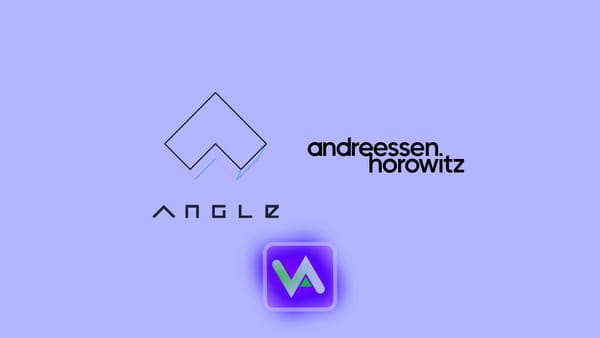
Angle Protocol Unveils Yield-Generating USDA Stablecoin Backed by U.S. Treasuries
Angle Protocol, backed by Andreessen Horowitz, launches USDA stablecoin pegged to the U.S. dollar. USDA is collateralized by U.S. Treasury bills and tokenized T-bills, with stakers earning yield from reserves and lending revenue.
- Angle Protocol, backed by Andreessen Horowitz, launches USDA stablecoin pegged to the U.S. dollar.
- USDA is collateralized by U.S. Treasury bills and tokenized T-bills, with stakers earning yield from reserves and lending revenue.
- The stablecoin aims to provide an attractive alternative to incumbents like USDT and USDC that do not pass on yield to holders.
- Angle plans to establish a blockchain-based forex hub for seamless swaps between its USDA and EURA stablecoins.
Decentralized finance (DeFi) protocol Angle, which secured $5 million in funding led by venture capital firm Andreessen Horowitz (a16z) in 2021, has launched its new U.S. dollar-pegged stablecoin USDA. The stablecoin is designed to generate yield for holders by sharing revenue earned from its real-world asset (RWA) reserves and DeFi lending activities.
USDA is fully collateralized by a basket of U.S. Treasury bills and tokenized T-bills. Token holders who stake their USDA on the Angle Protocol can automatically earn rewards derived from the yield generated by these reserve assets, as well as a portion of the revenue from the protocol's lending platform. Angle is targeting a minimum yield of 5% for USDA stakers.
The launch of USDA comes amid a wave of new yield-bearing stablecoins seeking to challenge dominant incumbents like Tether's USDT and Circle's USDC. While USDT and USDC are backed by cash, cash equivalents, and short-term securities, they do not share the yield earned on their reserve assets with token holders.
Angle's move into yield-generating stablecoins coincides with growing interest in tokenization from traditional financial institutions. Just last week, BlackRock launched its first tokenized fund called the BlackRock USD Institutional Digital Liquidity Fund ("BUIDL") on the Ethereum network. The fund is backed by $100 million in USDC stablecoin and signals a shift towards tokenization by the world's largest asset manager.
Angle's vision extends beyond just USDA. The protocol is aiming to build a decentralized foreign exchange (forex) hub that facilitates frictionless swaps between its U.S. dollar and euro stablecoins. Angle has already launched EURA, a euro-pegged stablecoin, which currently has over $22 million in circulation.
To bolster USDA's liquidity and adoption, Angle has partnered with Circle to enable fee-free conversions between USDC and USDA. This integration could help attract USDC holders looking to earn yield on their stablecoin holdings.
USDA will initially undergo a beta testing phase in the coming days, subject to approval by the Angle Protocol's decentralized autonomous organization (DAO) governance. A full-scale launch is planned for April, though U.S.-based investors will not have access to USDA during its initial rollout due to regulatory considerations.
The Angle Protocol has gone through multiple smart contract audits by leading security firms, including Chainsecurity and Sigma Prime, to ensure the safety and integrity of the USDA stablecoin system. The protocol also maintains a substantial bug bounty program, offering rewards of up to $500,000 for the discovery of critical vulnerabilities.
As the DeFi landscape continues to mature, the emergence of yield-generating stablecoins like USDA marks a significant step forward in the evolution of decentralized financial infrastructure. By providing users with a stable store of value that also offers attractive yields, protocols like Angle are positioning themselves at the forefront of the next phase of growth in the DeFi space.
With the backing of a16z and a strong focus on security, transparency, and innovation, Angle Protocol's USDA stablecoin is well-positioned to make a significant impact on the rapidly expanding stablecoin market. As more investors seek out opportunities to earn yield on their digital asset holdings, USDA could emerge as a compelling alternative to traditional stablecoins.